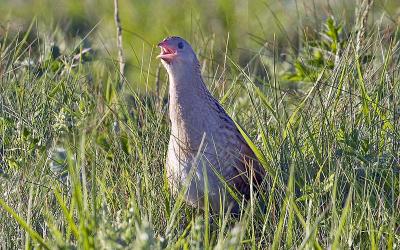Valley
Fauna and Habitat

European Dipper
European Dipper (Cinclus cinclus)

Travellers ascending by the waters of Fanes and Travenanzes Valleys, as well as the Boite and Felizon valley, can often meet this beautiful aquatic bird, diver par excellence. Skilful fisher, it dives against the turbulence of the rapids or flies just a few centimetres above the white waters. It is an indicator of good quality water.
×
Red-backed shrike
Red-backed shrike Lanius collurio

This small carnivorous passerine bird lives in open habitats with sparse thorny shrubs such as barberry and rose shrubs. On their thorns, the red-backed shrike impales its preys: insects or small mammals. In Cortina valley, the bird breeds in the meadows from Convento to Manaigo, though this species is not common as it prefers environments rich in insects and biodiversity.
×
Honey buzzard
Honey buzzard Pernis apivorus

This medium-sized bird of prey nests in woodlands of various kinds, preferably on trees next to the edge of clearings or open fields, up to 1500 mt. The bird is not commonly found in the Ampezzo Dolomites - the limit of its distribution habitat – except in the woods from Mandres to Mietres. This migrant bird mainly feeds on wasps and larvae of other insects and is present only in the summer season.
×
Corn Crake
Corn Crake Crex crex

This gruiform (crane-like) migrant bird, the symbol of hay meadows with sustainable agricultural management, is threatened throughout Europe. Its preferred breeding habitats are the hay meadows with 30 cm tall grass to shelter its nest, where hay making does not take place until June when eggs have hatched. Its distribution in Cortina is discontinuous, though it may be often heard singing at twilight at the beginning of summer, in the thick vegetation of the large meadows in the bottom of the valley.
×
Yellow-bellied toad
Yellow-bellied toad Bombina variegata

This tiny road is characteristic for the unmistakable colour of its belly. It is widely spread across low-altitude hill areas, but its presence in Cortina is quite exceptional and has been only recently ascertained. It lives in shallow puddles, where water gets easily warm, as those on the large landslides of the Ampezzo valley, Socrepes, Rumerlo and Lacedel up to 1600 mt.
×
Vipera ammodytes
Vipera ammodytes Vipera ammodytes

Despite its reputation as the most venomous of the common vipers, the horned viper is extremely rare. The warm gravel banks of the Ampezzo valley floor are one of the northernmost stations of its distribution habitat. The species is included in the Italian Red List of threatened species. It is found on the scree slopes above Aquabona and Fiames, as well as at Cimabanche.
×